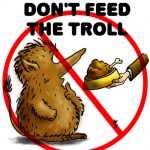(Editorial Note: Regular readers of the IP Asset Maximizer Blog might find this post an departure from the usual topics discussed on this blog. In the almost 2 years I have been blogging, I have consciously avoided talking about specific aspects of patent law, both in the form of case law, patent reform efforts and the US Patent Office itself because I believe there are many great blogs that do a great job that frequently discuss these topics and that I can likely add little to the already substantive discussions occurring elsewhere. However, given the great significance of the so-called "first to invent" system to the interests of individual and corporate inventors alike, I felt it appropriate to weigh in on the conversation. Put simply, any changes in the first to invent rule must clearly flesh out and respond to the resulting effects to businesses of all sizes, as well
A Closer Look at the Patent Office’s New Conversation about Adoption of a “First to File” Rule and a Proposal for a Win-Win for the Patent Office and Inventors
For Inventor of 21 Patents, Patent Troll Litigation Not Very Lucrative
Recently, I wrote a post on why I think that patent litigation is not a viable business model for inventors. Given a realistic deconstruction of the costs and possible damage awards, I concluded that, in most situations, it is not realistic for an inventor to presume that she will "hit the jackpot" by suing infringers and extracting settlement or damage awards. I obtained some pushback from this post, mostly from patent litigation lawyers, who contend that I am wrong in my view that patent litigation does not pay for inventors. Of course, everyone is entitled to their opinion, and I respect the views of others, however, no one who objects to my (somewhat) negative view of patent litigation as a business model, has provided me with numbers to discount my economic analysis of patent litigation. This recent post from The Prior Art blog entitled "Revealed! How Much Money a
A Patent Reality Check: Litigation Not a Viable Revenue Source for Most Inventors
The ability of an intrepid inventor to strike it rich from a great idea seems to be embedded in the DNA of many Americans. Perhaps this view emanates from the presence of patents in the US Constitution, which could create a feeling that US citizens have an "inalienable right" to use patent protection to their advantage. Alternatively, people may perceive the occasional media reports of successful inventors and substantial patent litigation awards as a signal that patents can serve as a path to wealth for those with great ideas (certainly, this is the Hollywood view). In truth, however, getting rich merely from a patent is a rare occurrence--maybe not as low a probability as winning the lottery, but the odds are incredibly long that any person can make money from a patented idea alone. Think about it: if all it took was a patent to make someone wealthy, there would be
Interview on Legal Issues Related to Open Innovation and Open Innovation Summit Discount
OPEN INNOVATION INTERVIEW WITH BRADEN KELLEY I recently was interviewed by Braden Kelley of Blogging Innovation about the interplay between Open Innovation and the law. For those interested in Open Innovation topics, Braden's blog is a great resource. The link to my interview is here: http://www.business-strategy-innovation.com/labels/Jackie%20Hutter.html Braden and I will both be participating in the Open Innovation Summit being held in Orlando on December 2-4, 2009 along with several other open innovation leaders, authors, and consultants. I will be leading a panel currently titled: "Patents as Tools to Accelerate Innovation - How To Get Your Organization On the Right Path" September 18, 2009 is the last day for the $400 early bird discount. You can get an extra $300 discount by using the code for Blogging Innovation readers can save an extra $300 by registering using the code - NXB458.
Is There an Emerging Business Model for IP Lawyers’ Owning So-Called “Patent Trolls”? Only Until Their Corporate Clients Find Out.
Dennis Crouch of The PatentlyO blog recently posted an intriguing tidbit about about well-known IP attorneys Carl Moore (Of counsel at Marshall Gerstein); Timothy Vezeau (patent attorney at Katten Muchin); and Nate Scarpelli (who used to and still appears to be associated with Marshall Gerstein). These prominent members of the Chicago IP community appear to be "moon-lighting" from their respective law practices to act as managing partners at a patent holding company called "Virtual Photo Store LLC" ("VPS"). As reported in PatentlyO, VPS is currently involved as defendant in a Declaratory Judgment action.
Here is a copy of the DJ Complaint, also posted at PatentlyO. (Interestingly, the Complaint lists VPS' address as that of the Marshall, Gerstein law firm.)The Complaint alleges that VPS is a non-practicing entity
about well-known IP attorneys Carl Moore (Of counsel at Marshall Gerstein); Timothy Vezeau (patent attorney at Katten Muchin); and Nate Scarpelli (who used to and still appears to be associated with Marshall Gerstein). These prominent members of the Chicago IP community appear to be "moon-lighting" from their respective law practices to act as managing partners at a patent holding company called "Virtual Photo Store LLC" ("VPS"). As reported in PatentlyO, VPS is currently involved as defendant in a Declaratory Judgment action.
Here is a copy of the DJ Complaint, also posted at PatentlyO. (Interestingly, the Complaint lists VPS' address as that of the Marshall, Gerstein law firm.)The Complaint alleges that VPS is a non-practicing entity
Chief Circuit Judge Michel Agrees with Me: NPE’s (aka “Patent Trolls”) are Not Necessarily “Illegitimate”
On his great 271 Blog, Peter Zura posted excerpts of the Chief Circuit Judge Michel's keynote address at the FTC hearings on "The Evolving IP Marketplace" last December where Judge Michel addressed the state of patent law and patent reform. Anyone interested in patents, the USPTO and patent reform should take a look. I posted a comment on this post, and am reposting it here (with additions) along with Judge Michel's comments about NPE's as presented on the 271 blog. Specifically, I was intrigued by Chief Circuit Judge Michel's view that NPE's ("non-practicing entities" also known by the pejorative term "patent trolls") should not be viewed as somehow "illegitimate." He apparently believes that by allowing those who are on the receiving end of NPE lawsuits to control the argument by "naming and framing" (my phrase) the problem as "trolls" is not helpful. Here is the excerpt of this part of
A Response to PWC’s “Starry-Eyed” View of the Value of Litigation as Effective Way to Monetize Patents
 I recently became aware of this patent litigation analysis prepared by PriceWaterhouseCoopers (“PWC”) (hat tip: Marcus Malek of the Intangitopia blog). The report appears to be rigorously prepared from data obtained from a large number of reported patent litigation cases dating from 1995. I read this report with interest and think that anyone who is interested in the ROI of patent enforcement should read it also. The data provide a wealth of information for anyone even thinking about bringing a patent case or who is involved in defending against claims of patent infringement.
Although the data in the PWC provides informational value, I nonetheless have a big problem with the following assertion that is prominently presented on page 18 under the title “What This Means for Your Business”:
"In light of the findings in this study, patent
I recently became aware of this patent litigation analysis prepared by PriceWaterhouseCoopers (“PWC”) (hat tip: Marcus Malek of the Intangitopia blog). The report appears to be rigorously prepared from data obtained from a large number of reported patent litigation cases dating from 1995. I read this report with interest and think that anyone who is interested in the ROI of patent enforcement should read it also. The data provide a wealth of information for anyone even thinking about bringing a patent case or who is involved in defending against claims of patent infringement.
Although the data in the PWC provides informational value, I nonetheless have a big problem with the following assertion that is prominently presented on page 18 under the title “What This Means for Your Business”:
"In light of the findings in this study, patent
A Consumer Product Company’s Costly Patent Lesson: It’s Not Enough to Protect the Invention, the Innovation Must Also be Patented
A SVP at a large consumer products company recently expressed frustration that he cannot bring a patent infringement lawsuit even when his company holds 18 US patents (and many other foreign patents) on a product that closely resembles a competitor's product. His annoyance is compounded because his company spent several years developing the product and technology covered by the patents. His company also spent several $MM introducing the product, which turned out to be a failure. The company removed the product from the market after several months, but the many patents remain in the portfolio today, and are still being maintained at considerable expense. I estimate that the patent protection for this failed product cost as much as $500K for patent coverage worldwide. Significantly, the product did not fail due to quality or performance issues. Rather, it failed because it was over-engineered and used many expensive ingredients, a fact which made
How Asking One Fundamental Business Question Can Reduce Expense and Improve Business Outcome of Patent Litigation
While a majority of companies consider the cost of obtaining patent protection an essential element of the product and technology development process, few of these same organizations favor the prospect of asserting their patent rights against potential infringers. Moreover, no company relishes the prospect of being a defendant in a patent lawsuit. That most do not readily welcome patent litigation is not surprising given that the average cost of large case (i.e., over $25 MM at stake) patent litigation through trial in 2007 was about $5MM per party in 2007. For disposition of smaller cases, the total amount per party was about $1MM in 2004 dollars. Why does it cost so much for a patent owner to assert her patent rights against an alleged infringer? Put simply, patent litigation at its core is an adversarial undertaking in which lawyers typically define the meaning of a successful outcome. In this context,


